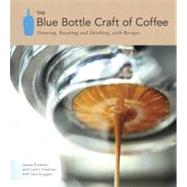
Note: Supplemental materials are not guaranteed with Rental or Used book purchases.
Purchase Benefits
What is included with this book?
JAMES FREEMAN is the founder and owner of Blue Bottle Coffee Company. More than a decade after starting out in a tiny converted potting shed in Oakland, Blue Bottle is now the country’s leading artisan roaster, with six cafés in the San Francisco Bay Area, roasteries on both coasts, and a presence on the High Line and in Rockefeller Center and Chelsea in Manhattan. In addition to its cafés, Blue Bottle is served in fine restaurants nationwide, including Chez Panisse, Gramercy Tavern, Coi, and others, and regularly garners national media attention. See www.bluebottlecoffee.com for more.
CAITLIN FREEMAN is the resident pastry chef for Blue Bottle Coffee Company and was a longtime owner of the San Francisco cake and sweets shop, Miette. James and Caitlin Freeman live in San Francisco, CA.
A staff writer for the San Francisco Chronicle’s food section, TARA DUGGAN earned a James Beard Award for best newspaper column and was nominated for an additional James Beard Award for feature writing. She lives with her family in San Francisco, and this is her third book.
CLAY MCLACHLAN is an award-winning photographer specializing in food, wine, and travel. His work has been featured in numerous cookbooks, including Cooking with Chocolate, which garnered a World Cookbook Award. He divides his time between San Francisco and Italy.
The New copy of this book will include any supplemental materials advertised. Please check the title of the book to determine if it should include any access cards, study guides, lab manuals, CDs, etc.
The Used, Rental and eBook copies of this book are not guaranteed to include any supplemental materials. Typically, only the book itself is included. This is true even if the title states it includes any access cards, study guides, lab manuals, CDs, etc.